Download Printable Green Bean Growing Guide »
Green beans are a delicious addition to any vegetable garden. It doesn’t matter if you have half an acre or a tiny garden patch—you can easily grow some green beans. They’re crunchy, crisp, and can be eaten right off the plant. They make a great addition to stews and a yummy, fresh summer side.
Green beans are simple to grow and perfect for beginner gardeners. If you’ve ever wanted to add this summer veggie to your garden, now’s an ideal time! Read on to discover how to grow green beans.
Table of Contents
Are green beans easy to grow?
Green beans are extremely easy to grow, and they’re the perfect vegetable to choose if you’re new to gardening. They can be grown in a wide range of climates and require only a little bit of tender loving care to thrive. They are a speedy crop that doesn’t require much care or maintenance.
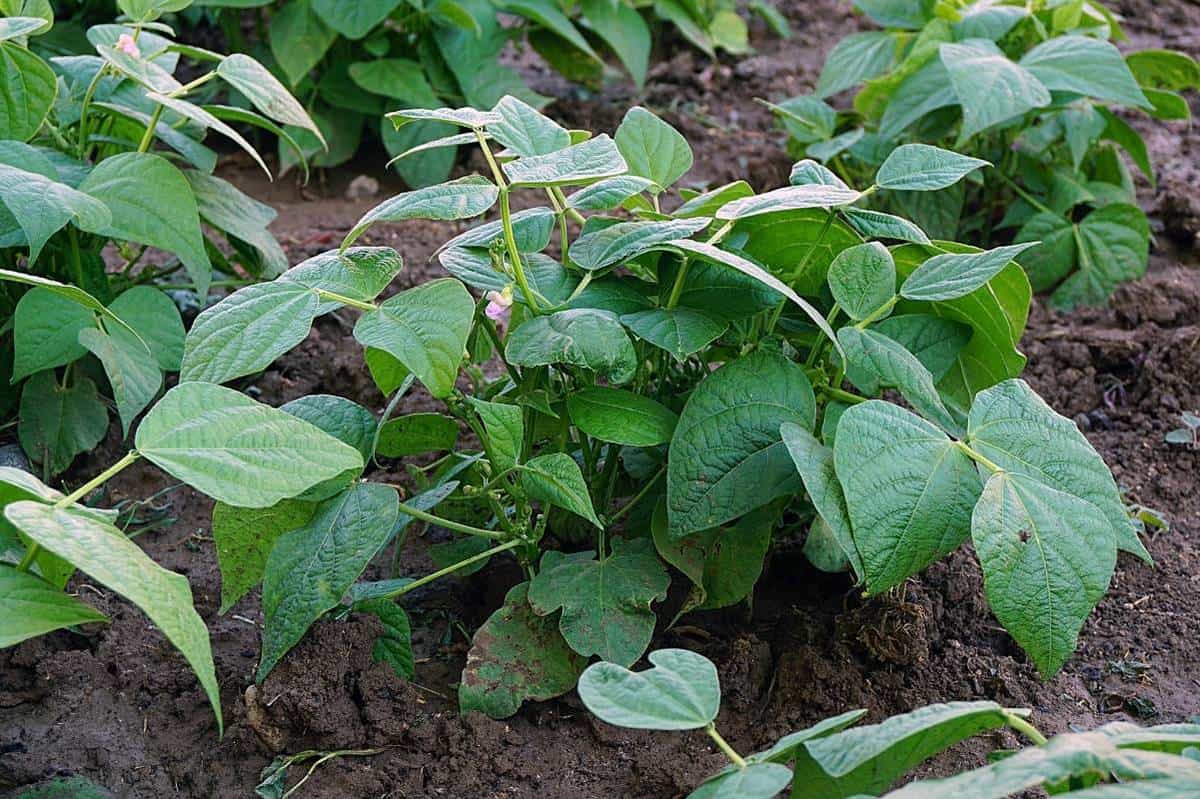
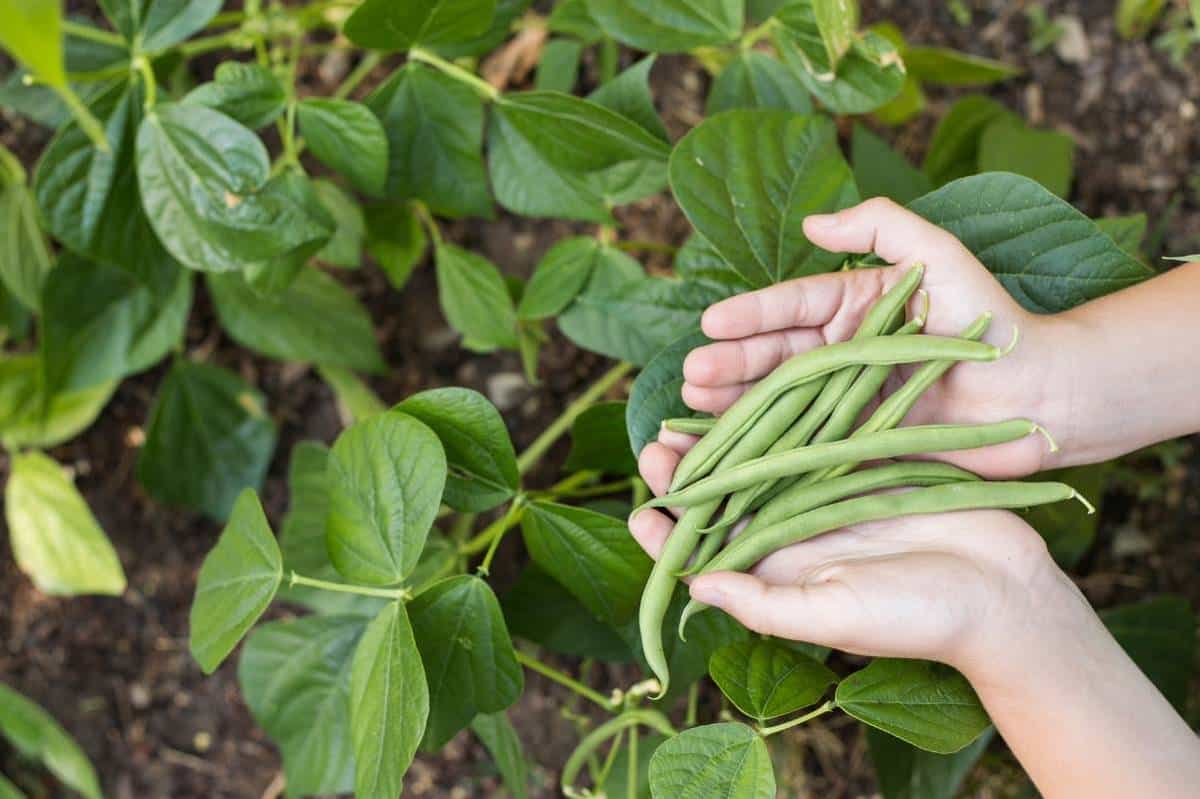
What’s the difference between bush beans and pole beans?
If you’ve been scouring garden websites or staring at seed packets, you’ve probably noticed that green beans are called pole beans or bush beans. Both are green beans and delicious, but they do have some differences.
Pole beans grow incredibly high. Different varieties may reach as high as 10-15 feet! They don’t take up a lot of space in your garden because they grow up instead of out. Most folks grow them up a trellis or pole (hence the name) to take advantage of the vertical space and make harvesting easy.
On the other hand, bush beans typically stop growing at two feet in height, and their growth is more compact, so they grow into a bushy plant instead of a tall vine. While bush beans can be easier to grow because they need less support, their harvest usually comes all at once, leaving you with a massive amount of beans. On the other hand, pole beans continue to produce beans as their vines grow. Pole beans are a good choice if you’re looking for a steady supply of beans for fresh eating throughout the summer.
Growfully Protip
It’s widely accepted that the flavor of pole beans is far superior to bush beans (although some bush bean cultivars are catching up). Pole beans tend to be more tender, sweet, and starchy.
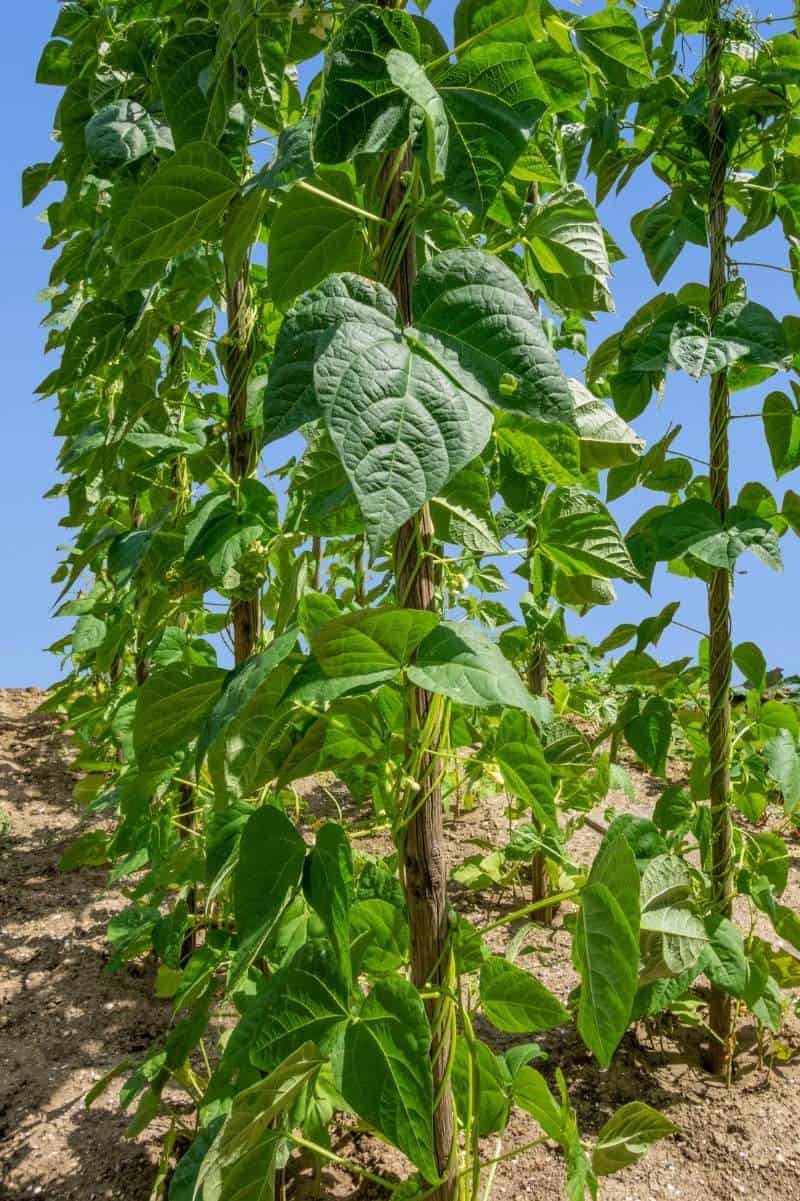
Do green bean plants need support to grow?
Bush beans don’t require support because they’re compact with thicker branches. Pole beans, however, will require some support. Their vines are thinner, and they need to climb up a trellis or some stakes. A trellis or pole will give their vines the support they need to keep climbing to continue producing beans.
In the Growfully Gardens, we grow our pole beans up our garden fence with great results. Pole beans grab on to just about anything, so it’s easy to use any vertical structure—an obelisk, a tower, a fence, a trellis, or, as the name suggests, just a pole!

When do you plant green beans?
Green beans are planted in the spring, and they’re direct-sown, which means you plant them directly in the soil. Aim to plant your green beans immediately after the last frost date for your region. Ideally, your soil temperature should have warmed to at least 48°F (or 9°C).
I know it’s tempting to plant your green beans early when you have a rush of warm, summer-like weather, but be patient and follow the growing instructions on your seed packet. If the soil is too wet or too cold, it can prevent germination.
Growfully Protip
Bush beans are fast growing and fast producing, so in many regions (including our Zone 6 garden here), you can get two or even three rounds of bush beans planted in one growing season.
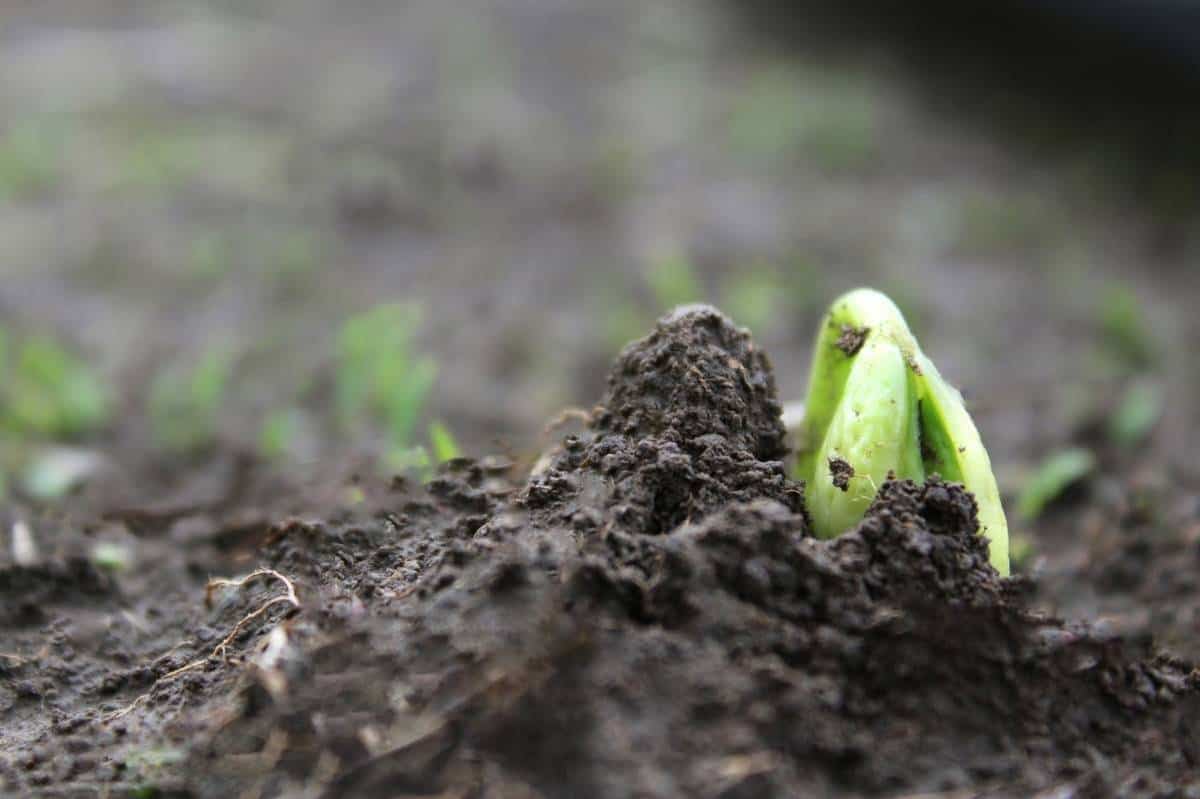
Where should I plant my beans?
Green beans are very versatile, and no matter if you choose bush beans or pole beans, you don’t need a lot of room to get a bounty of beans! Bush beans are a great option for raised beds or containers. Since pole beans get so darn tall, we recommend you reserve those for in-ground planting.
Green beans grow best in a site with plenty of sunlight and well-drained soil. They prefer a soil pH that is relatively neutral, between 6.0 and 7.0. Choose a site where you haven’t planted green beans in the last few years to cut down on soil-borne illnesses.
Green beans prefer good drainage, so if you are dealing with clay soil, make sure to amend it heavily with well-rotted compost to improve drainage, soil condition, and nutrients.
Planting from seed v. seedlings
Green beans don’t transplant well because their roots are so fragile. Plus, green bean plants grow so quickly, there isn’t any need to transplant seedlings in the spring. It’s best to plant your seeds directly in the garden after the soil has warmed. You’ll have a bushel of beans before you know it!


What are the best types of beans to plant?
We’ll always suggest that you chat with your local master gardeners group, seed store, or gardening experts in your area to find the best bean varieties for your unique microclimate. That being said, here are some of our favorite varieties here in the Growfully Gardens.
- Kentucky Wonder (Old Homestead) (pole)—This common bean heirloom variety has stuck around for good reason. The long, stringless pods are tender and delicious when young.
- Blue Lake Stringless Bean (pole)—Blue Lake is an heirloom that produces heavily! The pods are packed with full green bean flavor.
- Provider (bush)—This classic snap bean is our absolutely favorite traditional bush green bean. It lives up to its name—providing bushels and bushels of tender, crisp, bright green beans! It’s great for fresh eating, freezing, and canning. We’ll never be without it in our gardens.
- Dragon’s Tongue (bush)—This Romano-type “green” bean isn’t really green at all! It’s long, thick, flat, and speckled with purple and white splotches that turn green when cooked.
- Cherokee Wax (bush)—Wax style beans are typically yellow in color (making them way easy to harvest) and have a soft, waxy texture. This open-pollinated heirloom is one of our favorites.
How to plant green beans
We recommend direct sowing green bean seeds right in the soil rather than starting with seedlings. The seeds are nice and large, so they are very easy to work with.
1. Prepare your soil:
Amend the soil with well-rotted compost. This can be done in the fall or right before planting. Remove any weeds and loosen the ground using a hand rake.
2. Prepare your trellis or other support:
If you’re planting pole beans, put your trellis in place before the seeds are even planted. This may be as easy as planting your seeds along the garden fence. Alternatively, you could use a wire fence or cattle panel for a simple, ready-made trellis.
Another option is to create a teepee trellis by gathering three or four sticks together and tying them at the top, where they meet at a point. If you plant a few seeds at the base of each pole, the plants will wind their way around the poles, keeping your precious green beans supported and out of the dirt.
3. Plant seeds:
- Plant bush beans one inch deep with the seeds spaced out two inches apart. Individual bush bean plants should be spaced 6-8 inches apart depending on the variety (check your seed packet).
- Plant pole beans one inch deep with the seeds spaced out three inches apart.
Growfully Protip
We like to drop 2 to 3 seeds in each spot to compensate for any germination issues. Then you can thin them after sprouting later.
4. Thin your beans:
After your green bean plants have sprouted, thin them by using small scissors to snip off any extra plants—leaving behind the roots in the soil. You want your final pole bean plants to have about three to four inches of space between each plant, or six to eight inches between bush bean plants.

Do green beans need full sun?
Yes, green beans need a lot of sunlight to thrive. Plant them in an area that receives six to eight hours of sunlight daily. If your beans receive less than six hours of sunlight, they may still blossom, but they won’t produce as many beans.
Can you tell me how to grow green beans in containers?
You sure can! Both bush beans and pole beans can be grown in containers. Make sure the containers are large enough to grow green beans properly. Pole beans require a pot at least 18 inches in diameter plus a trellis or other vertical support system. In comparison, bush beans will thrive in a pot with a diameter of 15 inches.
Beans tend to have a shallow root system, so you don’t need your container to be overly deep—six to seven inches should work for bush beans, and eight to nine inches will work for pole beans.
Make sure you support your pole beans with some type of trellis, no matter which planting option you choose. Your containers should also several drainage holes at the bottom of the pot to prevent the roots from rotting.

How do I grow green beans with square foot gardening?
If you have limited space, the square foot gardening method might work for you. When planting bush beans in a square foot garden, plant one to four seeds in every square foot, making sure to plant seeds 6 inches apart. Pole beans are similar. If you allow for one trellis per square foot, you could plant between one and four seeds.
Helping your green bean plants thrive
Green beans are relatively hands-off during the growing season. If you planted pole beans, it’s a good idea to pinch off the top of the plant if it’s reached the end of the trellis. This will stop the plant from sending its energy into the vine, and it’ll move that energy into producing bean pods instead.
Fertilizing green beans
Your green beans shouldn’t need fertilizer throughout the growing season because they fix nitrogen into the soil on their own. If you do use a fertilizer, wait until the pods have begun to set on the plants. Avoid fertilizers high in nitrogen, or you will end up with lush greenery but low bean yields.
Watering green beans
Green beans need a moderate amount of water. Similar to the rest of your vegetable garden, aim for roughly an inch of water per week. Avoid watering at night or on cloudy days, as any water left on the leaves will stay there, which could cause disease. If possible, water in the morning on sunny days to allow the water to evaporate. You could also water the base of the plant directly to avoid getting the leaves wet.
Mulching green beans
Putting down a layer of mulch is a great way to help the soil retain moisture and protect the shallow roots of your green bean plants. It also helps cut down on the amount of weeding you’ll need to do, which is a blessing in any gardener’s book! Any kind of mulch will do the trick here, but we love pine shavings, leaf mulch, or weed-free straw.
Weeding green beans
Green beans send down shallow roots. This means that you need to take care when weeding them to prevent damaging their root system. Pulling weeds can disturb the roots, so we recommend a sharp surface hoe for weeding or scissors to clip the weeds off at the soil surface.
A good layer of mulch will also help suppress weeds and keep them from growing in the first place, so you have far less weeding to do.
Download Printable Green Bean Growing Guide »
How long after planting does it take to get green beans?
Green beans are a quick-growing crop. You’ll have tasty green beans off your bush bean plants within 50-55 days of planting. Pole beans take roughly a week longer to produce, so you should have delicious pole beans 55-60 days after planting.
Staggering plantings
If you’re planting bush beans, you might want to consider staggering your planting dates because bush beans produce a ton of beans all at once. In order to have plenty of fresh, crunchy beans all summer long, plant new green bean plants every two weeks. This way, your harvest will last longer, and it’ll be a tad more manageable—unless you’re someone who adores green beans and can eat a bushel of them right away!
How many green beans does a plant produce?
This will depend on the variety of green beans you choose as well as your growing conditions. For bush beans, you can assume a yield of between 1/2 pound per plant. For pole beans, you can get a full pound or even 2 pounds per plant.

How can you tell when a green bean is ready to harvest?
The great thing about green beans is it’s not really possible to harvest them too early—sure, they’ll be a little small, but they’ll still taste great. However, a good rule of thumb is that green beans are best harvested when they’re about the thickness of a pencil. When you snap one in half, it should break easily.
You definitely don’t want green beans to stay on the vine too long, though. If you allow your green beans to sit on the vine too long, they’ll become tough. You shouldn’t be able to see the beans inside the pod bulging out because green beans taste best when they’re still immature.
Harvesting and storage
One of the best parts of growing green beans is harvesting them for delicious meals! It’s best to harvest green beans in the morning. This is when the sugar levels inside are at their highest, resulting in sweet, juicy beans. They should be picked every day to encourage the growth of new beans. When you pick them, don’t rip them off the plant, as this can cause damage to the plant and prevent new pods from growing. Instead, use your fingernails or a sharp pair of garden shears to cut them off of the plant.
Once they’re harvested, they will keep for roughly 5-7 days wrapped in a tea towel, paper towel, or Veji bag. If you’re planning on canning or freezing them, it’s best to do this the day you harvest them to preserve their freshness.
 Pests/diseases
Pests/diseases
Green beans are pretty hardy, but they can be susceptible to a few pests and diseases.
Diseases
- Powdery Mildew: Green beans are most susceptible to disease if they’ve experienced a bout of wet or humid weather. This can cause a white fungus known as powdery mildew to appear on the leaves. If this happens, prune off any affected areas to prevent the wind from carrying the spores to other plants. If the disease is in the early stages, an organic fungicide can prevent it from taking over the plant. Powdery mildew, in general, is mostly just an aesthetic problem. While it can reduce yields and eventually kill plants, it’s relatively slow-acting compared to the quick-growing season of green beans. So don’t stress too much about it.
- Mosaic virus: If you see a mosaic pattern of green, yellow, and white on your leaves, your green beans might have the mosaic virus. There is no way to get rid of this virus, so if you see your plants are affected, you need to destroy them, so they don’t spread the virus to healthy plants. To prevent this virus in the first place, make sure your plants have plenty of air circulation, keep up on your weeding, and don’t allow carrier bugs such as aphids to live on your plants.
- White mold: This can be difficult to diagnose when it first begins, and it can present in a few different ways. Look out for stems that look weak or have water spots at the base. You might also see drooping, yellow leaves and stems, or when it’s taken hold, a net of white mold on the branches that looks like cotton. Proper weeding, crop spacing, and airflow are all critical in preventing this disease. Watering your crops in the morning and keeping the water from the leaves can also help prevent white mold.
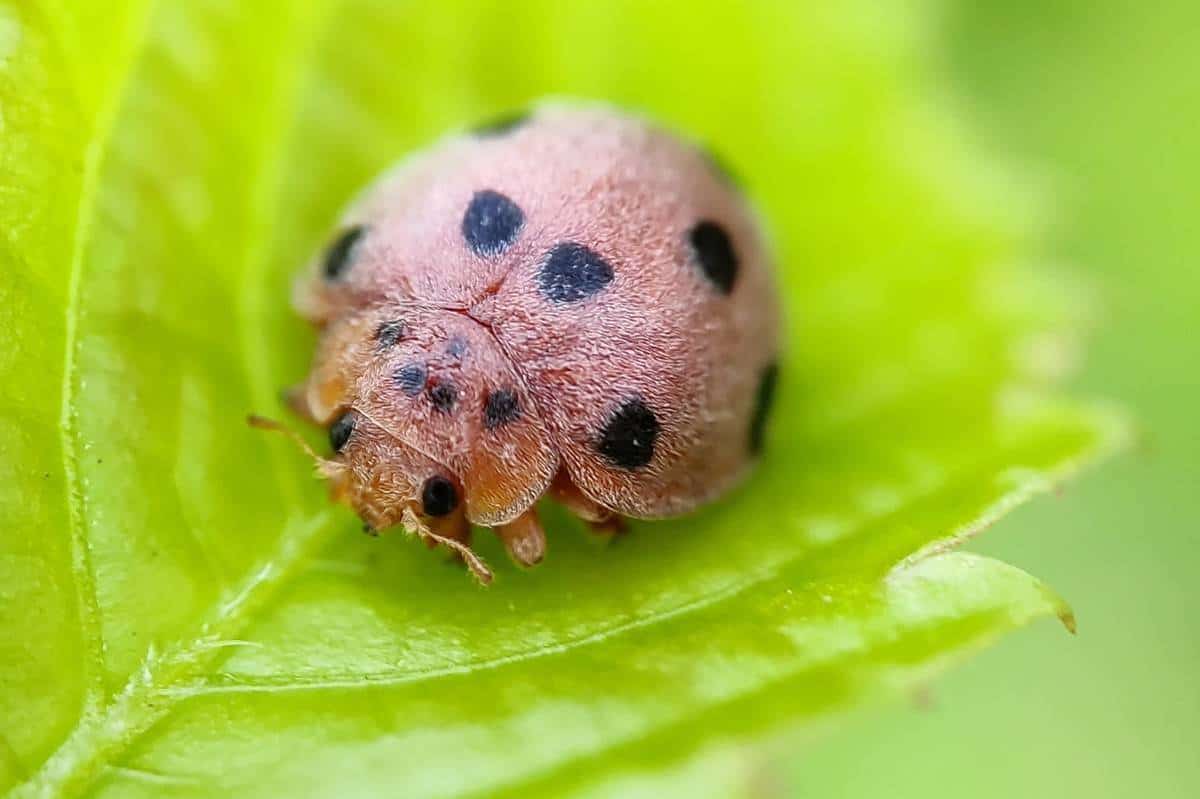
Insects:
- Aphids: These are small, green insects that feed on the underside of new leaves. They can be discouraged by planting nasturtium or mustard to attract them away from your bean plants. Catnip, garlic, and chives will all repel aphids. You can also use insecticidal soap or dust your leaves in flour. Often, all it takes is a strong spray of cold water to dislodge them and motivate them to find another food source.
- Mexican bean beetles: These pests look like yellow or orange ladybugs when they’re fully grown, but it’s easier to get rid of them when they’re in the larvae or egg stage. Tiny yellow eggs in clusters of 30-40 can be removed by scraping them off the leaves. The larvae look like spiny yellow tubes, and they too can be physically removed. Mexican bean beetles, if left, can chew away at your leaves, leaving gaping holes. To prevent an infestation, make sure to clean up your garden in the fall and consider planting rosemary or marigolds around your bean plants as a deterrent. Once you have an infestation, Mexican bean beetles can be hard to get rid of because they overwinter in soil and mulch. If you find yourself with a heavy Mexican bean beetle infestation each year, you might want to consider taking a year or two off from growing beans of all kinds.
- Whiteflies: These are small, white, triangular-shaped flying insects that feed on the underside of plants. They can be discouraged by setting sticky traps using yellow paper coated in a petroleum jelly and dish soap mixture. You could also try using insecticidal soap or encouraging predator insects such as ladybugs, hummingbirds, and spiders.
- Japanese beetles: Like Mexican bean beetles, Japanese beetles eat holes in your plant’s leaves, leaving you with a skeleton leaf. They can be challenging to get rid of once they get established, and they can cause a lot of plant damage. You can recognize them by their shiny, iridescent green heads and coppery bodies. They’re relatively easy to pick off plants, and insecticidal soap might help. Their larvae look like tiny white grub worms found at the base of your plants. Planting geraniums near your plants might repel Japanese beetles.
Do I need to rotate my green bean crop?
Yes, crop rotation is a must for green beans! Like peas, green beans are part of the legume family, which means they help fix nitrogen into the soil. A nitrogen-loving crop from the brassica family—think Brussel sprouts, cauliflower, broccoli, and cabbage—would thrive in the area of the garden you planted green beans last year.
Beans are such great soil enrichers that they can be planted after almost any other type of crop. The one exception to this is onions. Never plant beans after onions or garlic. This is because these vegetables can introduce disease into the soil that can harm green beans.
It’s also vital to rotate green beans to help avoid insect infestations—especially from bean-specific pests like Mexican Bean Beetles.

Companion planting
Green beans enrich the soil for the plants around them, so it’s helpful to think of which plants would benefit from the nitrogen they add to the earth. When considering companions for your green beans, include strong, aromatic plants that will help repel pests and insects. Marigolds and other strongly-scented plants like rosemary, lemon balm, and other herbs are a great option for helping to mask the scent of green beans from common insects.
Good companions for green beans
- Leafy greens such as lettuce, spinach, and kale can all be grown around bush bean plants. You might even consider planting these under your pole bean trellis to shade the delicate leaves from direct sunlight.
- Corn is great for pole beans if you don’t want to use a trellis. The beans feed nitrogen to the corn, and the corn acts as a natural trellis for the bean plants.
- Flowers and herbs such as marigolds, summer savory, rosemary, and nasturtiums all act to repel Mexican bean beetles and bean leaf beetles. Summer savory has the added benefit of enriching your bean’s flavor.
- Members of the brassica family, radishes, peas, cucumbers, and potatoes are also good companions for green beans.
Enemies of green beans
- All types of onions, including green onions, leeks, and yellow onions, can kill off the helpful bacteria that grow on the roots of the bean plant.
- Beets don’t grow well near pole beans.
Download Printable Green Bean Growing Guide »
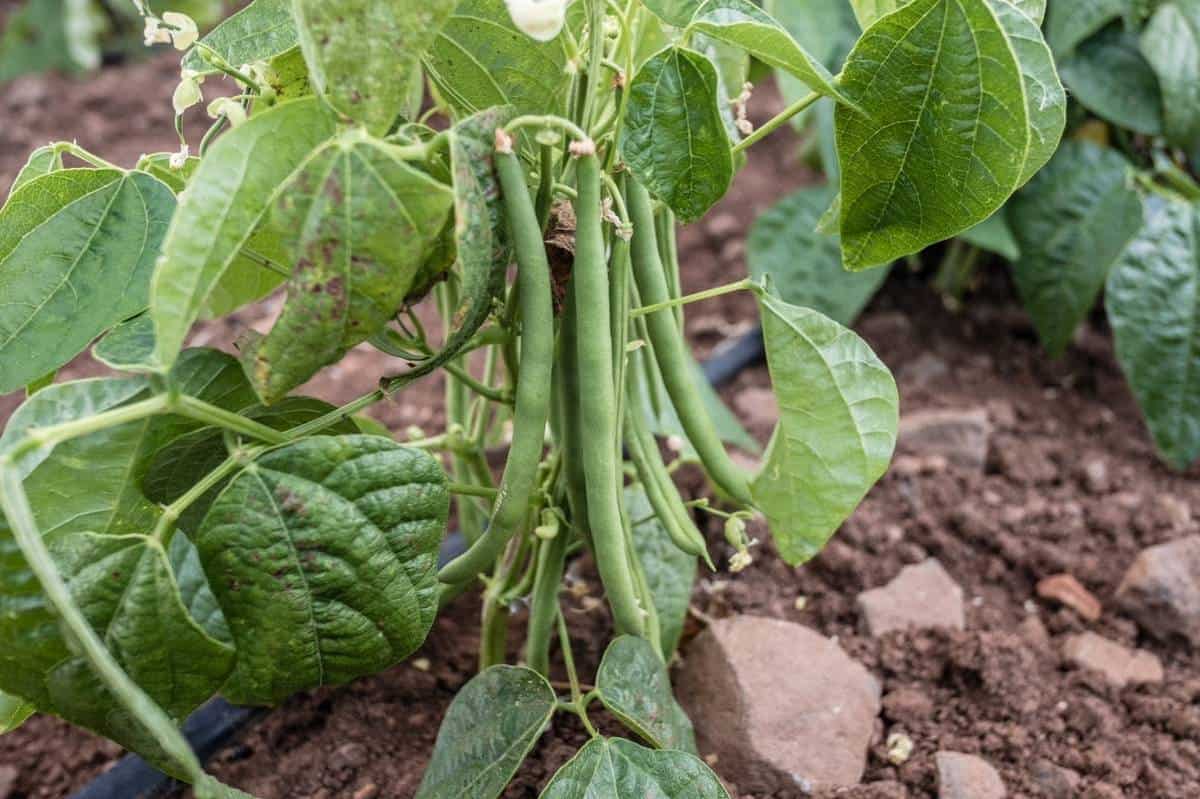
How to Grow Green Beans
Green beans are a versatile and nutritious vegetable. They’re easy to grow and harvest and make a great addition to any garden. Learn about growing green beans here.
Materials
- Green bean seeds
Tools
- Well-draining soil
- Sharp surface hoe or scissors
- Trellis or other support for pole beans
- Organic mulch
Instructions
- Add support. Pole bean plants need a trellis or other support to climb up as they produce beans. Set up this support before planting beans so that you don't disturb the fragile root system later.
- Skip the fertilizer. Green beans generally do not need fertilizer during the growing season, as they fix nitrogen to the soil.
- Weed carefully. Bean plants have shallow roots. To protect their roots, clip weeds off at the surface with a sharp hoe or scissors rather than pulling them up by the roots.
- Stagger plantings. Bush beans tend to set many beans at once. If you are growing bush beans, plant new bean plants every two weeks to spread out the harvest and make it more manageable.
- Companion plant with rosemary and marigolds. To deter Mexican bean beetles, plant these highly-scented plants nearby.
- Practice crop rotation. Crop rotation is key for green beans—not only do beans fix nitrogen into the soil to help with other vegetable production next year, but rotation also helps to avoid insect infestations.

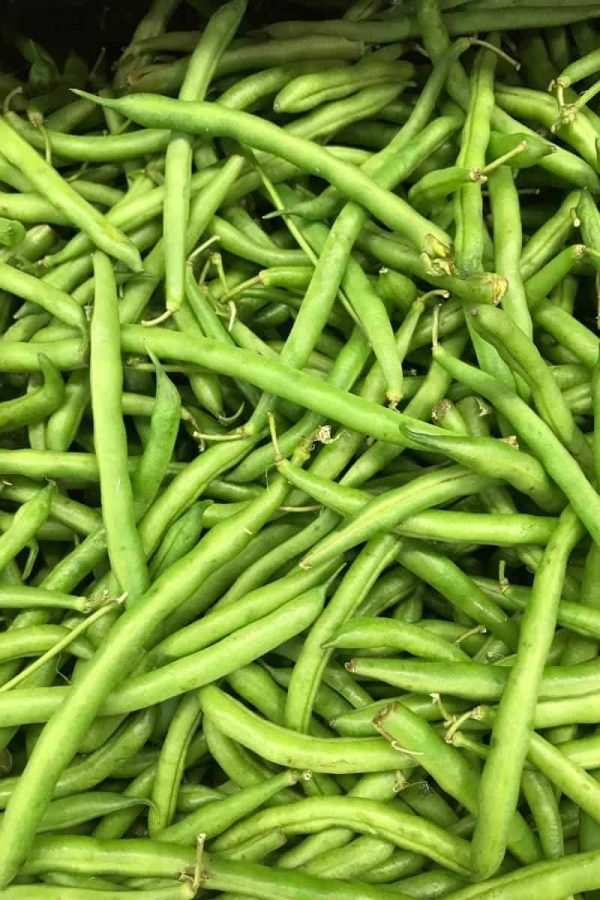
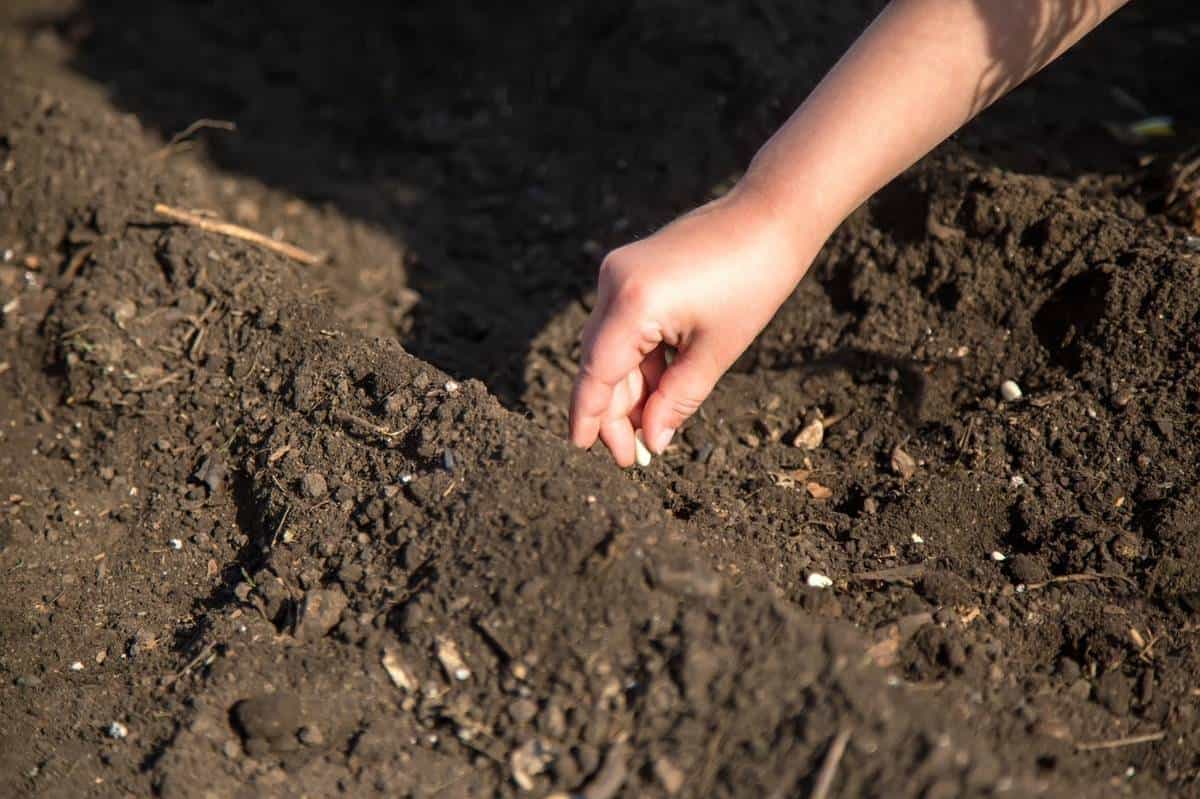
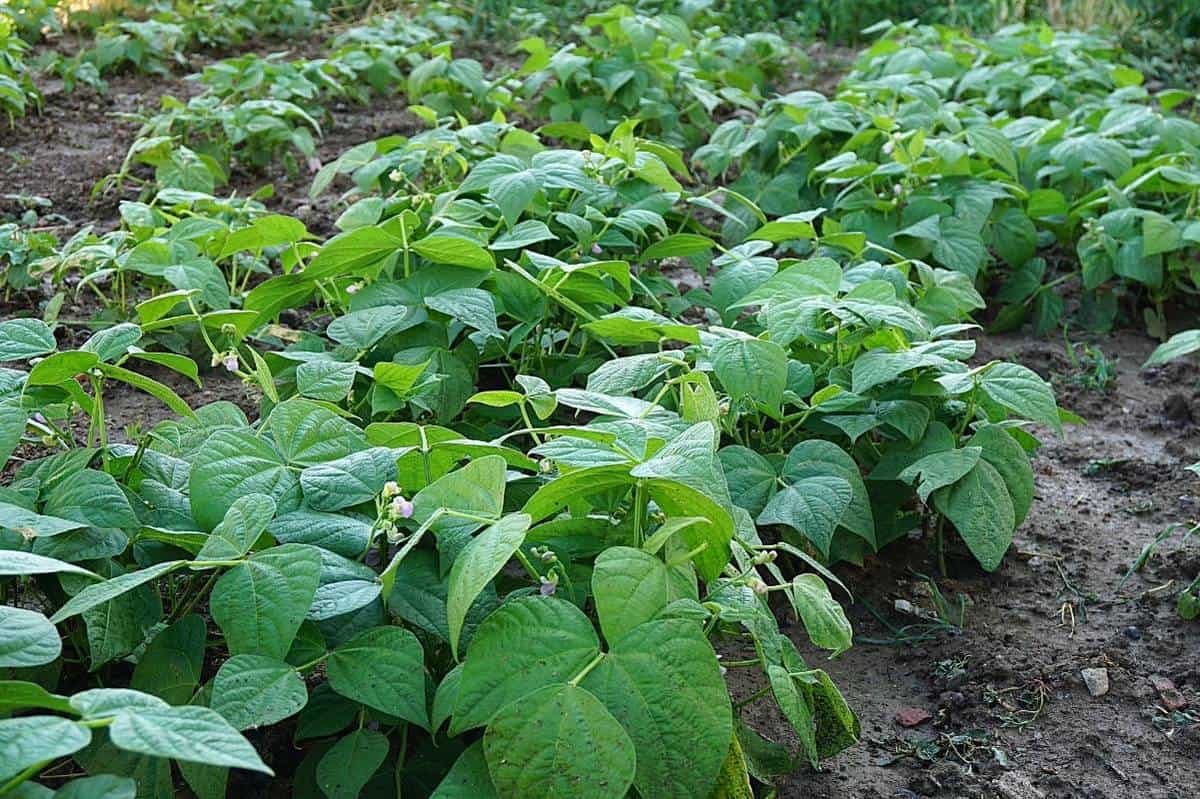
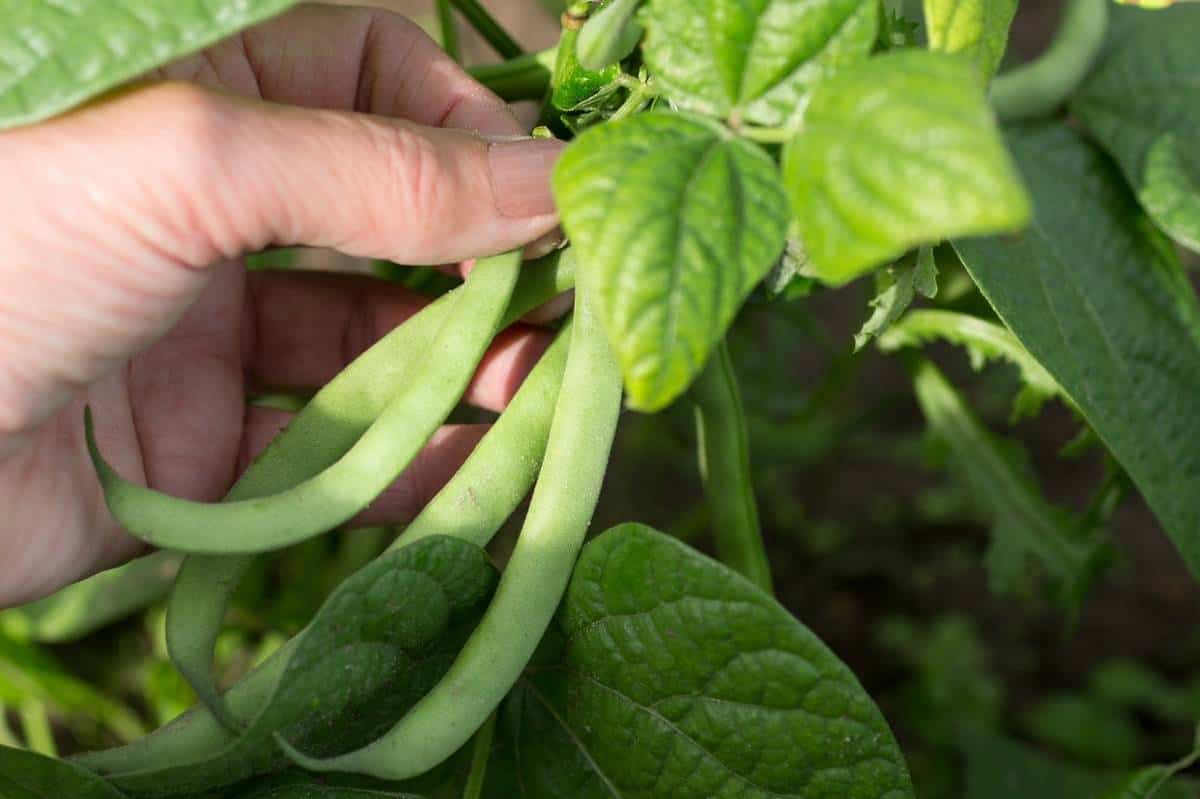






Thank you for this great, succinct guide. Makes it enjoyable to plan for next spring!